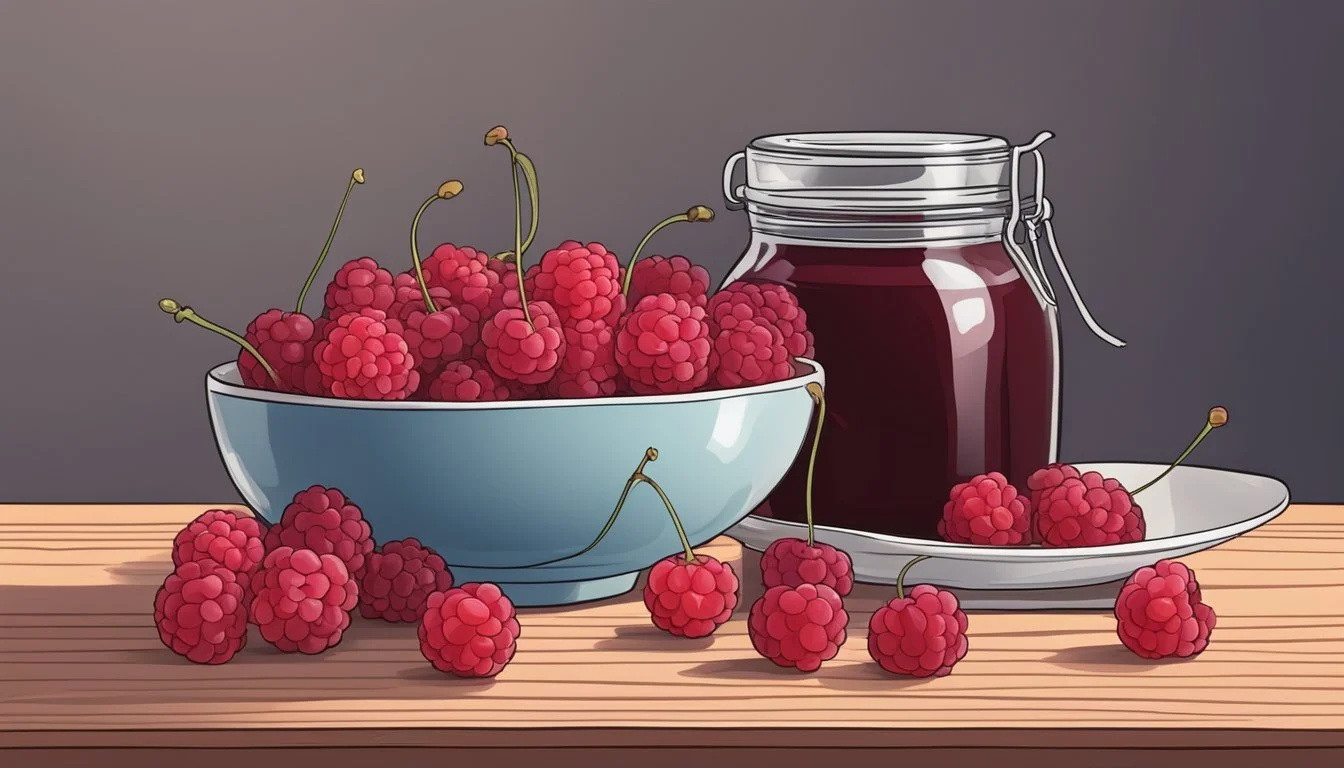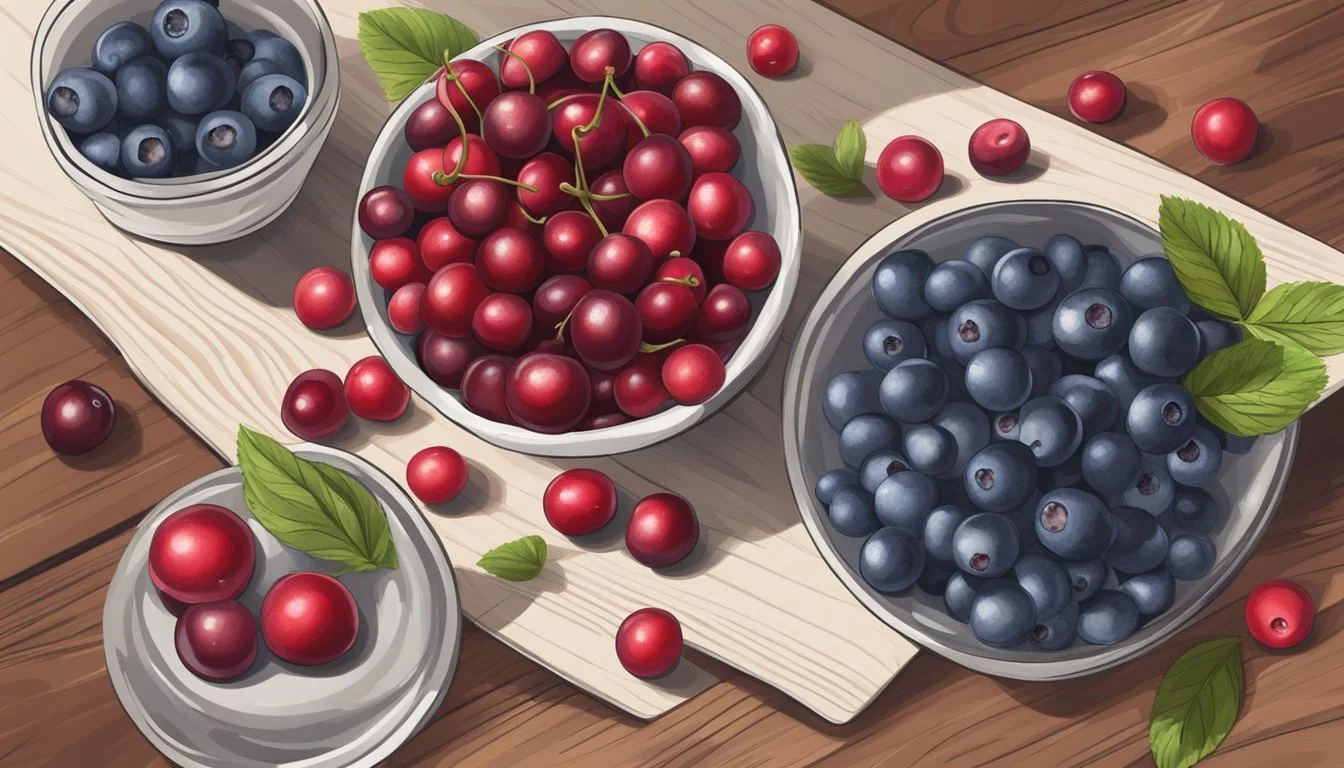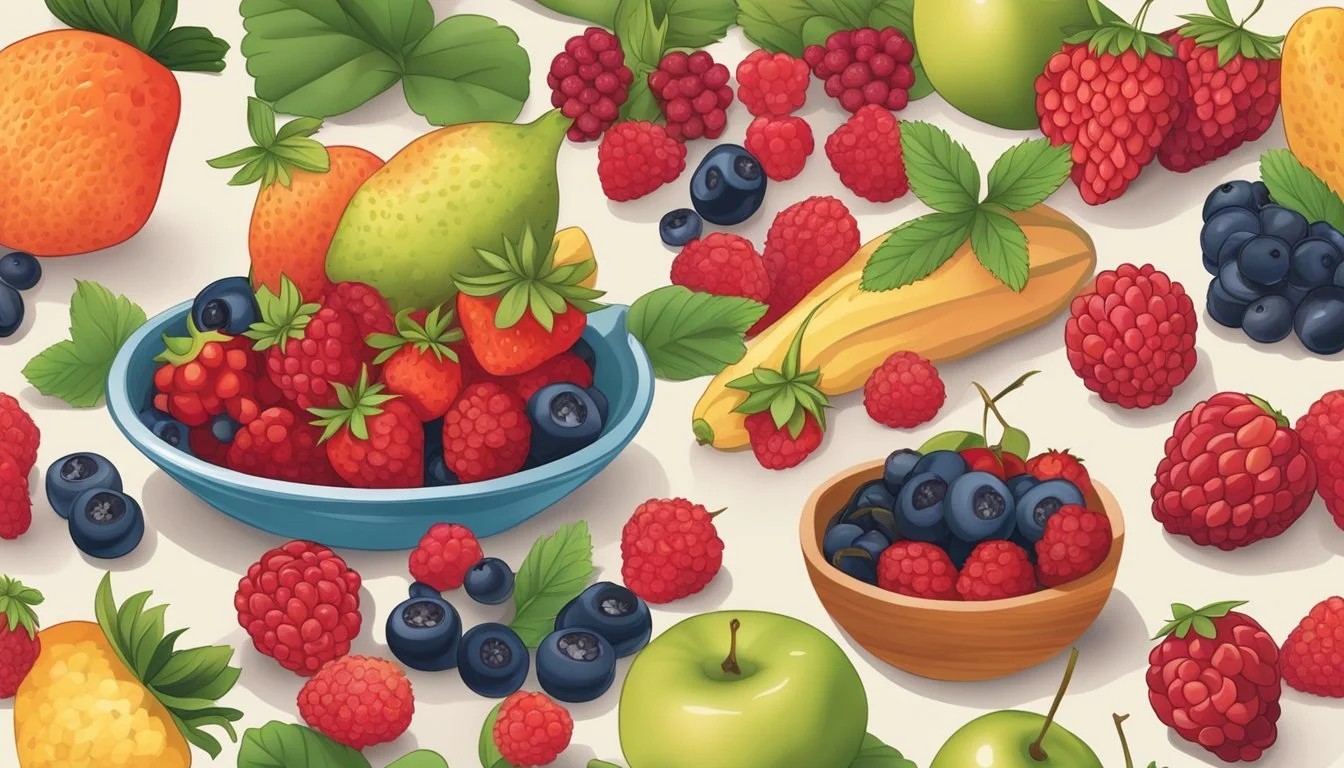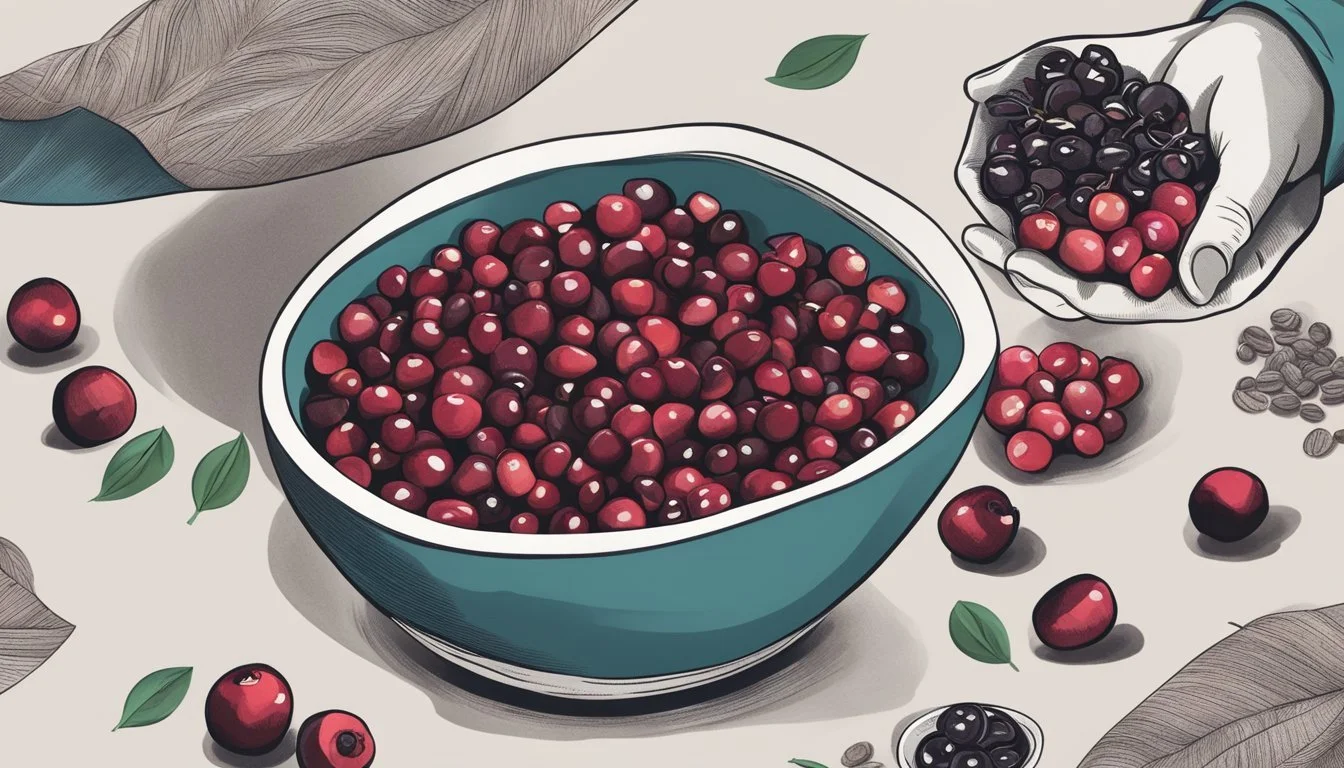Cranberries Substitutes
Best Alternatives for Recipes
Cranberries are a delightful addition to many dishes, thanks to their unique blend of tart and slightly sweet flavors. If you're in need of cranberry substitutes, there are plenty of options that retain the vibrant color and distinct taste of cranberries. For instance, cherries are excellent because they share a similar bold red hue and can be easily used in sauces, jellies, and desserts.
Another fantastic substitute is mashed apricots, known for their inherent sweetness. These can be used without much additional sugar, making them a great option for making jam or jelly fillings. Apples, with their universally loved flavor, can also work well, bringing a familiar taste and easy availability to your recipes.
Lastly, gooseberries offer a tartness that closely mirrors that of cranberries. Perfect for pies, tarts, and preserves, gooseberries can provide the desired tanginess while seamlessly fitting into a variety of dishes. Each of these substitutes brings its own unique qualities to the table, ensuring that your recipes remain delicious and visually appealing.
Understanding Cranberries
Cranberries are cherished for their unique flavor and diverse culinary applications. They are rich in nutrients and provide numerous health benefits. Knowing more about their nutritional profile and uses can help in identifying suitable substitutes.
Nutritional Profile
Cranberries are low in calories but high in essential nutrients. A 100g serving typically contains around 46 calories.
They are rich in dietary fiber, which aids digestion. Cranberries also provide a significant amount of vitamin C, which is vital for immune health and skin integrity. Antioxidants found in cranberries help combat oxidative stress in the body.
Additionally, these berries have bioactive compounds like flavonoids that have anti-inflammatory and heart health benefits.
Culinary Uses
Cranberries are versatile and can be used in a variety of dishes. One of the most popular uses is in making cranberry sauce, which is a staple during Thanksgiving.
They are commonly used in sauces, jams, and jellies. In baking, cranberries are popular in desserts, baked goods, and pie fillings.
Their tart nature complements sweet pastries and baked dishes well. They are also consumed dried as a snack or added to salads for an added tangy flavor.
Unique Flavor Characteristics
The flavor of cranberries is a distinctive combination of tartness and a hint of sweetness. This tart flavor is a result of their high acidity, making them unique among berries.
Their tanginess is often highlighted in sauces and baked goods. The berries have a sharp taste that can cut through rich, creamy dishes, providing a balancing element.
This unique flavor profile makes cranberries a favored ingredient in various culinary traditions. They are especially valued for their ability to enhance both sweet and savory dishes.
Identifying Suitable Substitutes
When cranberries are out of season or unavailable, various alternatives can match their taste, texture, and color in recipes. Consider the application—whether baking, cooking, or consuming raw—when choosing the best substitute.
Criteria for Substitution
Taste: The substitute should closely mimic the tartness and sweetness of cranberries.
Texture: A similar chewy or firm texture is vital to maintain the dish's intended mouthfeel.
Color: Red or similar-colored fruits are preferred to keep the visual appeal intact.
Consistency: The substitute should have a comparable consistency, especially for recipes requiring specific moisture levels.
Substitutes for Baking
Blueberries: These offer a sweet and slightly tart flavor. Maintain a 1:1 ratio for an ideal balance in muffins or cakes.
Cherries: Fresh or frozen cherries provide a sweet-tart profile and firm texture which is excellent for tarts and pies.
Currants: Red or black currants can replace cranberries in a 1:1 ratio, offering the tartness needed in baked goods.
Dried Cranberries: If fresh cranberries are unavailable, dried versions can work well in breads and bars. Rehydrate them to achieve the desired moisture.
Substitutes for Cooking
Apples: Dice or slice apples for use in stews and sauces. They add sweetness and a softer texture.
Pomegranate Seeds: These can mimic the tart-sweet balance and add a pop of color in roasts or glazes.
Raspberries: Use these in savory dishes, like stuffings, for a sweet-tart burst similar to cranberries.
Frozen Cherries: Ideal for cooking applications where a firm texture and tangy flavor are required. Substitute them in a 1:1 ratio.
Substitutes for Raw Applications
Red Currants: Perfect for salads and snacks, they offer a bright tartness similar to cranberries.
Pomegranate Seeds: Their vibrant color and juicy texture make them suitable for adding in raw dishes.
Pink Berries: These can be used in fruit salads for their similar tartness and aesthetic appeal.
Raisins: Golden raisins can add a touch of sweetness and chewy texture in green salads and rice dishes.
By employing these substitutes, one can ensure similar taste, texture, and appearance to cranberries across various recipes.
Specific Alternatives and Their Uses
Many fruits and non-fruit items can effectively replace cranberries in various recipes, each bringing unique tastes and textures to the table. The right substitute depends on whether you are seeking a fruit-based or non-fruit alternative.
Fruit-Based Substitutes
Cherries: Cherries, because of their bold red color, are an ideal visual replacement for cranberries. They are also sweet and somewhat tart, making them suitable for sauces, jellies, or baked goods. Raspberries: With their similar acidity, raspberries can step in for cranberries in baked items. They provide fiber and antioxidants while maintaining a tart profile. Blueberries: Blueberries offer a milder flavor but work well in desserts such as pies and muffins. Their texture and sweetness make them a versatile option. Lingonberries: Less common but highly suitable, lingonberries share a striking similarity in taste and appearance. They can be used efficiently in jams and preserves. Apricots: Although different in color and texture, apricots provide a unique sweetness and can be utilized in jellies and baked goods where the distinct cranberry taste is less critical.
Non-Fruit Substitutes
Cranberry Juice: For liquid recipes, cranberry juice is a direct substitute, suitable for dressings and marinades. It retains the original flavor profile without altering the dish's appearance significantly. Cranberry Jelly: When recreating the texture of whole cranberries, cranberry jelly can be used. It is particularly helpful in sauces and spreads. Pomegranate Seeds: With their tart and juicy nature, pomegranate seeds can mimic the bite of cranberries in salads and garnishes. Lemon Juice: Though not a perfect match, lemon juice can replace the tartness in recipes, especially in dressings or marinades. It adds a bright, citrusy flavor that stands in well for cranberries in some dishes.
In choosing substitutes, one must consider the role of cranberries in the recipe, whether it is their color, texture, or tartness that needs replicating.
Seasonal and Holiday Considerations
Choosing the perfect cranberry substitute involves not only culinary accuracy but also seasonality and holiday traditions. Certain fruits align better with specific seasons and celebrations, enhancing the authenticity and flavor of various dishes.
Autumn and Winter Favorites
Autumn and winter are closely linked with cranberries, especially during Thanksgiving and Christmas. During these seasons, grocery stores and farmers' markets often feature fruits that can replace cranberries in various recipes.
For cranberry sauce, consider using red currants or lingonberries. Both offer a similar tartness and a vibrant red color that mimics cranberries well.
Cherries are another option. They are slightly sweeter but can be used in sauces and jellies, maintaining the festive color. For holiday baking like cranberry muffins, consider using dried cranberries which are available year-round or substituting with dried cherries or raspberries.
Versatility Across Seasons
During summer, access to fresh, local produce facilitates finding substitutes that maintain the quality of your dishes. Fresh raspberries and red currants, available at farmers' markets, can fill the gap left by out-of-season cranberries.
Raisins serve as a year-round alternative, easily accessible at grocery stores. They bring a different sweetness that can complement both savory and sweet dishes. Frozen cranberries, typically available throughout the year, are another practical substitute.
Apple juice-sweetened dried cranberries offer a softer, sweeter option for those looking to switch things up. These alternatives ensure that whether it’s a summer salad or a winter holiday feast, there's always a fitting substitute to carry forward the cranberry tradition.
Health Considerations When Substituting
When choosing substitutes for cranberries, it's crucial to consider their sugar content, sweetness, and nutrient composition. These factors can significantly impact the health benefits and overall flavor profile of your dishes.
Sugar Content and Sweetness
Different fruits vary in sugar content and sweetness levels. For instance, cherries are often used as a substitute for cranberries due to their similar vibrant color. Cherries, however, have a higher natural sugar content, which could affect blood sugar levels and calorie intake.
Red currants are another common substitute and are less sweet than cherries, making them closer to cranberries in terms of sugar content. However, adjustments in recipes may be needed to balance sweetness.
When using any substitute, consider the ingredient's sugar impact. Those aiming to control their sugar intake should account for these differences, monitoring both the quantity used and the overall sweetness they contribute to the dish.
Nutrient Composition
Cranberries are known for their unique nutrient profile, which includes high levels of antioxidants, vitamin C, dietary fiber, and a low-calorie count. These contribute to their health benefits, such as supporting urinary tract health.
When substituting, it's essential to compare the nutrients of alternative fruits. Red currants, for example, also provide vitamin C and antioxidants but might differ in fiber content.
Cherries offer significant antioxidants and vitamins but in different ratios. They may not provide the same dietary fiber levels as cranberries.
Ensuring the chosen substitute aligns with your dietary needs helps maintain the intended health benefits of your recipe. It's also advised to vary fruit choices to achieve a balanced nutrient intake.
Shopping and Storage Tips
When looking for substitutes for cranberries, focusing on freshness and proper storage ensures the best flavor and texture for your recipes.
Selecting Quality Substitutes
For fresh cranberry substitutes, it's vital to assess their ripeness and condition. Cherries and red currants should be plump and bright in color without any soft spots. Farmers' markets often provide fresher options compared to grocery stores.
If using frozen cranberries or their substitutes, ensure they are fully frozen without ice crystals, indicating potential thawing and refreezing.
Dried cranberries and similar dried fruits should be soft, not overly hard or sticky. It's best to store dried substitutes in airtight containers in a cool, dark place to maintain their quality.
Culinary Creativity with Substitutes
Cranberry substitutes can bring out unique flavors and textures in recipes. By experimenting with different fruits, you can create both savory and sweet dishes with delicious combinations.
Innovative Pairings and Recipes
Cherries, with their bold red color, offer a visually appealing alternative to cranberries. They work well in sauces and jellies, providing a rich, red hue. In a savory context, cherries can be mashed and used as a filling for game meats or added to a tangy balsamic glaze.
Pomegranate arils add a sweet yet tangy profile to smoothies and can be an exciting butter substitute in dessert fillings. For pies and crumbles, rhubarb brings a tartness close to that of cranberries, balanced with a hint of sweetness.
Black currants, rich in vitamin C, can be used in jams and syrups, offering a sour, tangy kick to dishes. They make excellent fillings for tarts and are also perfect for sauces that need a robust flavor.
Adjusting Recipes for Substitutes
When substituting blueberries for cranberries in muffins or cakes, it's essential to adjust the sugar content due to blueberries' natural sweetness. Reducing added sugars by approximately 20% can help balance the flavors.
For smoothies using pomegranate arils, consider reducing other sweeteners in the recipe. Adding a dash of lemon juice can introduce an extra tangy note to elevate the drink further.
Red currants can replace cranberries in sauces but might require less additional sweetener due to their natural sweetness. When making marinades, these substitutes may also necessitate slight changes in the quantities of other liquids to maintain the desired texture and consistency.
Lastly, cherries, being softer and sweeter, may require a bit less sugar and a shorter cooking time in recipes where maintaining a thicker consistency is important.









